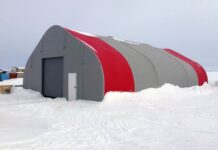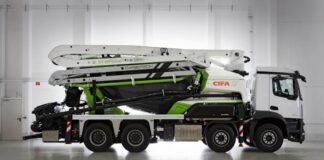The European construction equipment sector has gone on to report a stable market performance in 2022, despite the fact that there remained economic as well as geopolitical challenges all across the year. Post the Bauma exhibition recently held in Germany, the CECE Business Climate Index is yet again witnessing optimistic levels.
The conditions related to the general economy have changed completely in 2022 as compared to the previous year. It is indeed astounding that the construction sector is indeed doing well, all thanks to full order books. Even if there is a pushback in inflation as anticipated, the rate hike by the ECB as well as the supply chain challenges are not going to be over anytime soon, as per CECE President Alexandre Marchetta. The situation happens to be far more complex, and one must use as much strength as possible to get past the obstacles that stand in the way.
Apparently, the construction equipment industry’s resilience is backed by a stable business situation across most of the sectors. That said, it does face a pretty toxic mix of challenges due to current supply chain disruptions, inflation, as well as concerns when it comes to the world economy. All this also happens to be reflected in the robust sentiments in the industry. Apparently, the climate index went down slightly over the year as the repercussions of the Ukraine war unfolded; it looks to be bouncing back after Bauma in November last year.
The sales of 2022 in Europe came in at almost the same levels as what were seen one year ago, with a decline of just 0.6%. This gives an idea of the robust demand situation across Europe; minus the ongoing supply chain disruptions, the market could have gone on to see another prosperous year. Factoring in the economic fallout due to Russia’s war against Ukraine resulted in the European market picture looking more amicable. Sales in Europe, with Russia not included, declined by 37% as western sanctions went up around 3% last year.
It is well to be noted that the sub-segments related to equipment also performed similarly, with slight ups and downs—road machinery witnessed a surge of 1% whereas tower crane sales went flat and earthmoving equipment and concrete machinery saw slight declines of 2% and 1%, respectively. Compact and light machines with -0.5% performed better as compared to the heavy machinery segment with -2%. Notably, regional differences did not play a decisive role this year since most of the major regions of the world saw very minor rates when it came to growth or dips.
However, South Europe was a significant exception, with a growth of 12% in sales. Turkey and Russia happened to be positive as well as negative outliers, with nearly 40% growth and decline, respectively.
There are still 60% of the manufacturers from Europe who report a backlog of four months or more. This goes on to confirm that the first half of this year is safe as far as capacity utilisation and sales scenarios are concerned. In the second half of the year, the higher interest rates that are used to lessen the inflation in Europe weigh heavily on the outlook of the construction industry.
That must be anticipated to affect equipment sales, which are utilised in the residential sector; however, growth is expected to return to Europe in the spring since inflation would gradually lessen its grip across the economy.
Likewise, the landscaping and gardening sectors are also expected to see softer demand after many years of boom. Civil engineering will, however, still benefit from public investment programmes across many European markets. That said, because of the overall restrained demand, economic activity is going to be subdued, and the GDP is expected to hit 0.3% this year across both the eurozone and non-eurozone regions.
The CECE annual economic report consists of sections across the macro-economic situations, the construction industry’s performance, and the main segment of the European construction equipment vertical.
The report also has information when it comes to national CECE member associations, thereby shedding more light on the area’s development as far as the European construction sector is concerned.




































